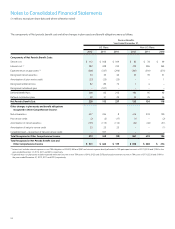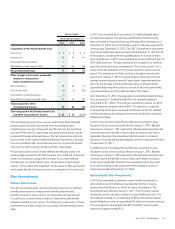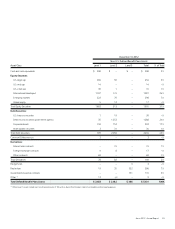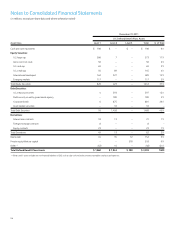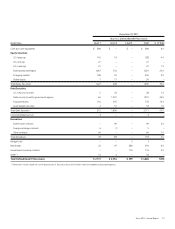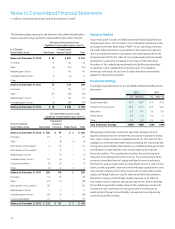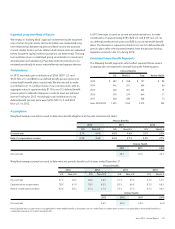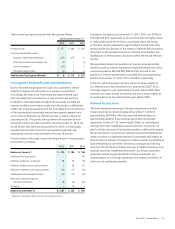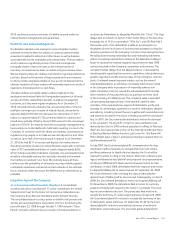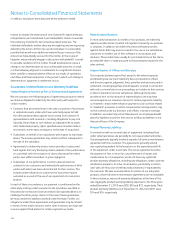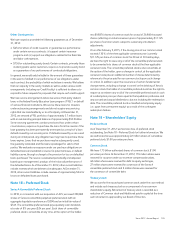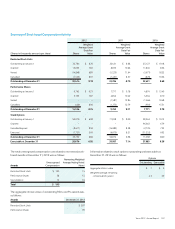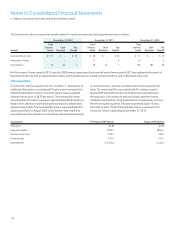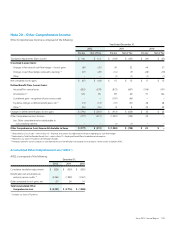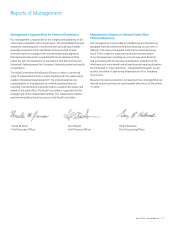Xerox 2012 Annual Report Download - page 104
Download and view the complete annual report
Please find page 104 of the 2012 Xerox annual report below. You can navigate through the pages in the report by either clicking on the pages listed below, or by using the keyword search tool below to find specific information within the annual report.
Notes to Consolidated Financial Statements
(in millions, except per-share data and where otherwise noted)
102
The tax effects of temporary differences that give rise to significant
portions of the deferred taxes were as follows:
December 31,
2012 2011
Deferred Tax Assets
Research and development $ 793 $ 876
Post-retirement medical benefits 359 368
Anticipated foreign repatriations 264 41
Depreciation and amortization 52 71
Net operating losses 630 637
Other operating reserves 300 285
Tax credit carryforwards 177 379
Deferred compensation 312 306
Allowance for doubtful accounts 73 93
Restructuring reserves 30 29
Pension 696 547
Other 143 132
Subtotal 3,829 3,764
Valuation allowance (654) (677)
Total $ 3,175 $ 3,087
Deferred Tax Liabilities
Unearned income and installment sales $ 947 $ 996
Intangibles and goodwill 1,252 1,261
Other 48 41
Total $ 2,247 $ 2,298
Total Deferred Taxes, Net $ 928 $ 789
The above amounts are classified as current or long-term in the
Consolidated Balance Sheets in accordance with the asset or liability
to which they relate or, when applicable, based on the expected timing
of the reversal. Current deferred tax assets at December 31, 2012 and
2011 amounted to $273 and $229, respectively.
The deferred tax assets for the respective periods were assessed
for recoverability and, where applicable, a valuation allowance was
recorded to reduce the total deferred tax asset to an amount that
will more-likely-than-not be realized in the future. The net change in
the total valuation allowance for the years ended December 31, 2012
and 2011 was a decrease of $23 and $58, respectively. The valuation
allowance relates primarily to certain net operating loss carryforwards,
tax credit carryforwards and deductible temporary differences for
which we have concluded it is more-likely-than-not that these items will
not be realized in the ordinary course of operations.
Although realization is not assured, we have concluded that it is
more-likely-than-not that the deferred tax assets, for which a valuation
allowance was determined to be unnecessary, will be realized in the
ordinary course of operations based on the available positive and
negative evidence, including scheduling of deferred tax liabilities and
projected income from operating activities. The amount of the net
deferred tax assets considered realizable, however, could be reduced
in the near term if actual future income or income tax rates are lower
than estimated, or if there are differences in the timing or amount of
future reversals of existing taxable or deductible temporary differences.
At December 31, 2012, we had tax credit carryforwards of $177
available to offset future income taxes, of which $79 are available
to carryforward indefinitely while the remaining $98 will expire
2013 through 2032 if not utilized. We also had net operating loss
carryforwards for income tax purposes of $1.3 billion that will expire
2013 through 2032, if not utilized, and $2.4 billion available to offset
future taxable income indefinitely.
Note 17 – Contingencies and Litigation
As more fully discussed below, we are involved in a variety of claims,
lawsuits, investigations and proceedings concerning securities law,
intellectual property law, environmental law, employment law and the
Employee Retirement Income Security Act (“ERISA”). We determine
whether an estimated loss from a contingency should be accrued by
assessing whether a loss is deemed probable and can be reasonably
estimated. We assess our potential liability by analyzing our litigation
and regulatory matters using available information. We develop our
views on estimated losses in consultation with outside counsel handling
our defense in these matters, which involves an analysis of potential
results, assuming a combination of litigation and settlement strategies.
Should developments in any of these matters cause a change in our
determination as to an unfavorable outcome and result in the need to
recognize a material accrual, or should any of these matters result in a
final adverse judgment or be settled for significant amounts, they could
have a material adverse effect on our results of operations, cash flows
and financial position in the period or periods in which such change in
determination, judgment or settlement occurs.
Additionally, guarantees, indemnifications and claims arise during
the ordinary course of business from relationships with suppliers,
customers and nonconsolidated affiliates when the Company
undertakes an obligation to guarantee the performance of others if
specified triggering events occur. Nonperformance under a contract
could trigger an obligation of the Company. These potential claims
include actions based upon alleged exposures to products, real estate,
intellectual property such as patents, environmental matters and other
indemnifications. The ultimate effect on future financial results is not
subject to reasonable estimation because considerable uncertainty
exists as to the final outcome of these claims. However, while the
ultimate liabilities resulting from such claims may be significant to
results of operations in the period recognized, management does not
anticipate they will have a material adverse effect on the Company’s
consolidated financial position or liquidity. As of December 31,


